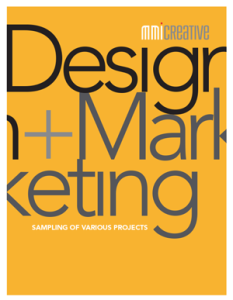Coated vs. Uncoated Paper
When designing a printed piece, an important decision to make upfront is the type of paper it will be printed on. Aside from your personal preference about how the paper feels, there are other properties to paper to consider that could be the difference in making a powerful impression.
Print paper basically falls into two categories: coated paper and uncoated paper. Each category has its unique advantages and disadvantages to consider when choosing what type to use for a print project.
COATED PAPER starts out as uncoated paper that then has a surface sealant of clay and other liquids applied to it. This makes the surface very smooth and ink is better able to sit on top of the paper surface and not spread into the paper’s fibers.
Advantages:
With coated paper you have finish options: gloss, dull (or satin), and matte. All give varying amounts of surface sheen. Gloss is super-smooth, reflecting light directly back. At the gloss extreme is cast-coated paper that has an almost patent-leather shine. Matte, while still smooth in feel, is a little rougher in the coating texture that disperses light. In between is gloss and matte is dull. Matte and dull papers are usually more opaque than gloss paper.
Since ink sits on top of the paper finish halftone dots and text is very crisp. Photographs will really pop off a page on a gloss finish coated paper.
Disadvantages:
High sheen paper can be hard on the eyes for reading in projects that are text-heavy.
Coated papers have limited range of color – usually white and cream. There are some specialty coated papers that have metallic and pearlized finishes.
Popular uses for coated papers:
- Magazines
- Coffee table type books
- Brochures and flyers
- Catalogues
UNCOATED PAPER has no added layer on the surface, resulting in a more natural look and feel. However, uncoated paper can suggest a high-end feel just as well as coated paper can with finishes such as eggshell, vellum, smooth and super smooth.
Advantages:
Uncoated papers can come in a wide variety of colors and finish textures. These can be used as part of the design consideration for conveying warmth and understated elegance.
Uncoated papers are excellent platforms for specialty printing such as embossing, engraving and foil stamping.
Uncoated papers are easier to write on and are the choice if you have a project that forms or areas that needs to accept writing ink.
Disadvantages:
Since the paper surface is porous, uncoated paper will absorb more of the ink, rendering images and ink color a little more dull and fuzzy.
Popular uses for coated papers:
- Stationary
- Direct mail pieces
- Invitations
- Presentation pieces
- Books and pamphlets
Whether choosing coated or uncoated paper, MMi Creative is ready to work with you to make your next print project a stand out.


